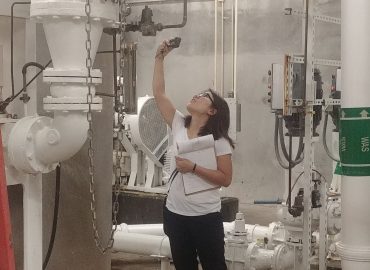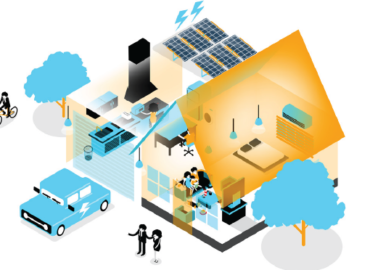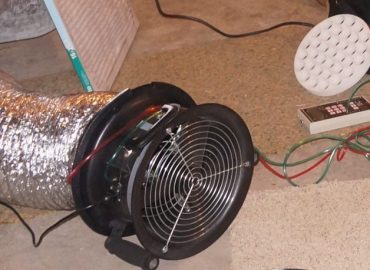PHAs: Energy Efficiency Barriers
SEDAC recently conducted research to identify ways to help Public Housing Authorities (PHAs) engage in energy efficiency. In part 1 of our PHA series, we share some of our findings about the challenges that PHAs face when engaging in energy efficiency. While some challenges are specific to PHAs, others are common in many low-income, multi-family housing situations.
Challenges to engaging in energy efficiency
- Budget constraints. PHAs administer public housing with budget allocation from the US Congress and oversight by the US Department of Housing and Urban Development (HUD). Many PHAs face serious budget constraints as the federal government continues to cut funding for public housing. Many PHAs are also experiencing decreases in tenant funding from residents who are increasingly impoverished.
- Capital needs backlogs. PHAs in the U.S. have collective capital needs and maintenance backlogs estimated at $26 billion, or $19,000 per unit (Finkel et al., 2010). The capital needs backlog is lower in the Midwest, at $9,500/unit. Due to budget constraints, PHAs often defer maintenance, capital improvements, and energy efficiency opportunities, which compound the capital needs backlog. Factors that exacerbate the capital needs backlog include:
- Austere designs, poor construction with substandard materials
- Congress-mandated construction cost caps
- Aging building stock, with almost half of public housing buildings 50 years or older and 90% 30 years or older.
- Residents have no financial incentive to conserve energy. Federal housing policy considers utilities to be part of overall housing costs, and they are generally included in an overall tenant payment (McCarty, 2014). For most public housing, tenant housing payments (rent + utilities) are capped at 30% of actual income, and HUD directly or indirectly pays the utilities. If energy efficiency measures lower utility costs, more of the tenant housing payment can be directed towards rent instead, and tenants are unlikely to see any financial benefit from savings (Mendelsohn, 2018).
- PHAs have limited ability to capture energy savings. How utility allowances are calculated also influences how much money PHAs are able to recover from energy savings improvements. HUD requires PHAs to periodically review utility allowances to determine how much money they will receive from HUD for utility payments. When utility allowances are adjusted to reflect energy improvements, the savings from these improvements are returned to HUD, not the local PHA. There are some HUD allowances and programs that allow PHAs to capture more of the savings, but smaller or medium PHAs may find these programs difficult to navigate.
- Staffing shortages. Training and capacity to implement energy efficiency measures also present significant barriers. Without "energy champions" on staff, energy projects are not initiated. While larger PHAs may have such a champion, smaller or medium PHAs are often overwhelmed with basic operations and maintenance and tenant concerns. Staff at smaller PHAs may also lack the capacity to apply for grants or energy performance contracting that would enable them to engage in energy efficiency.
- Minimizing disruption to tenants. Energy efficiency efforts are hampered by PHAs' desires to minimize disruption and displacement, especially for longtime elderly residents and residents with disabilities (Dentz et al, 2016). In buildings without consistent, predictable turnover, energy efficiency installations prove challenging. Sometimes the turnover period is too short for meaningful energy efficiency projects.
SEDAC interviewed PHA administrators and researched best practices to identify ways to overcome the barriers and engage in energy efficiency. The good news is that many PHAs are successfully engaging in energy efficiency. Stay tuned for our next installment about energy efficiency solutions at PHAs!
References/Further Reading
- Dentz, J., Conlin, F., Podorson, D., Alaigh, K., & Davis, T. (n.d.). Public Housing: A Tailored Approach to Energy Retrofits. 98.
- Finkel, M., Lam, K., Blaine, C., de la Cruz, R. J., DeMarco, D., Vandawalker, M., & Woodford, M. (2010). Capital Needs in the Public Housing Program: From Insight to Impact. Retrieved from Abt Associates Inc. website: https://www.hud.gov/sites/documents/PH_CAPITAL_NEEDS.PDF
- Mendelsohn, M. (2018). Expanding Solar Availability to the Low‐income Community: Learnings from the Denver Housing Authority. Solar Energy Industries Association. https://www.seia.org/blog/expanding‐solar‐availability‐low‐income‐community‐learnings‐denverhousing‐authority
- McCarty, M. (2014). Introduction to Public Housing [CRS Report for Congress]. Retrieved from Congressional Research Service website: https://fas.org/sgp/crs/misc/R41654.pdf
- Schwartz, A. (2015). Housing Policy in the United States. 3rd edition. Routledge.





